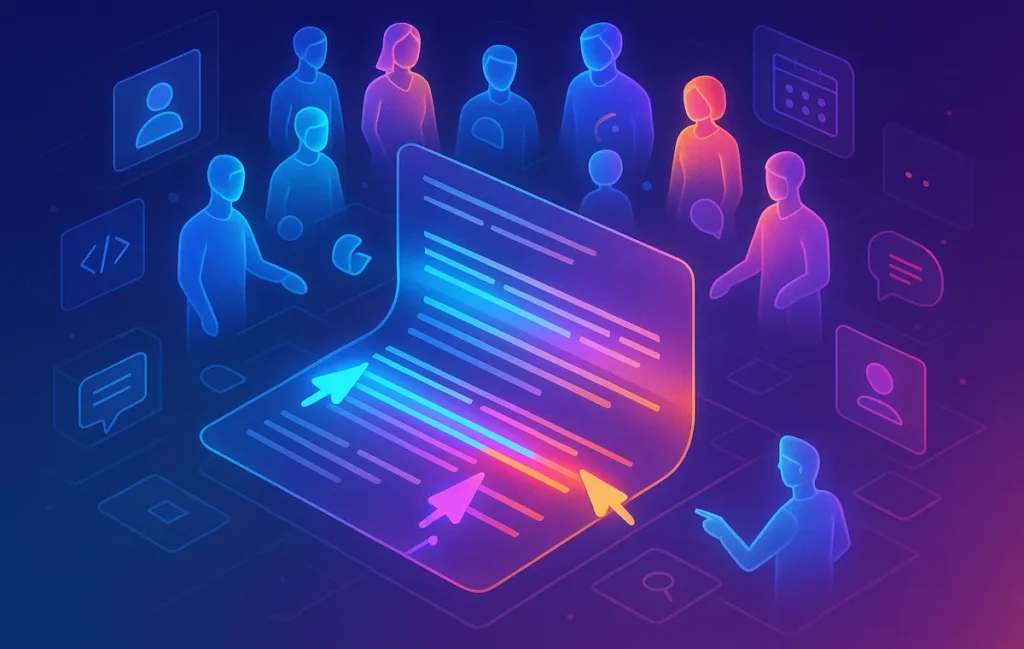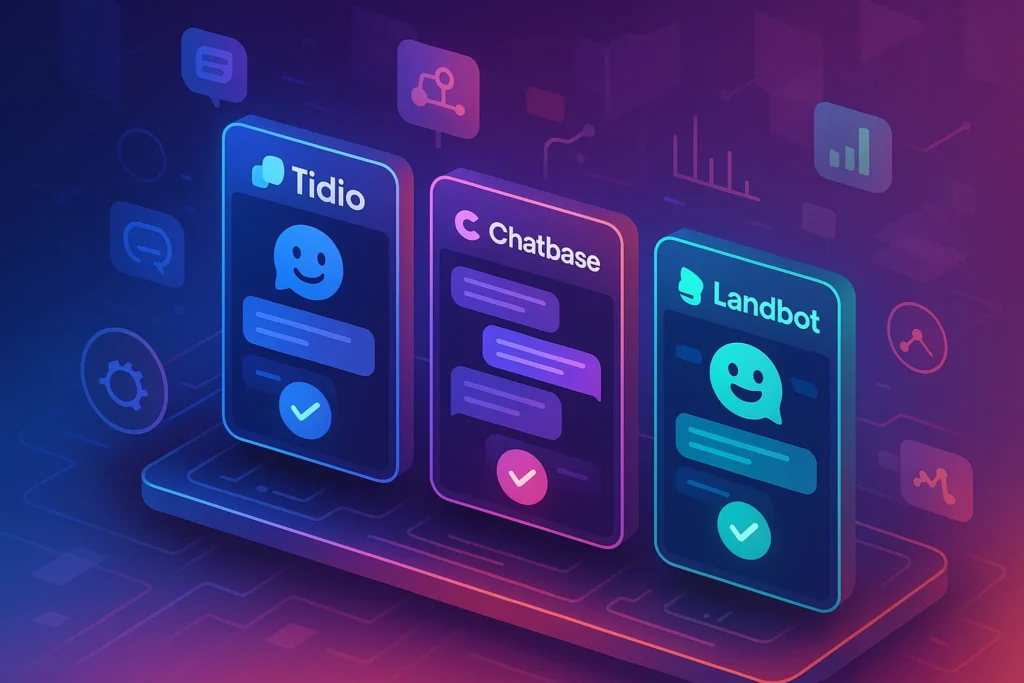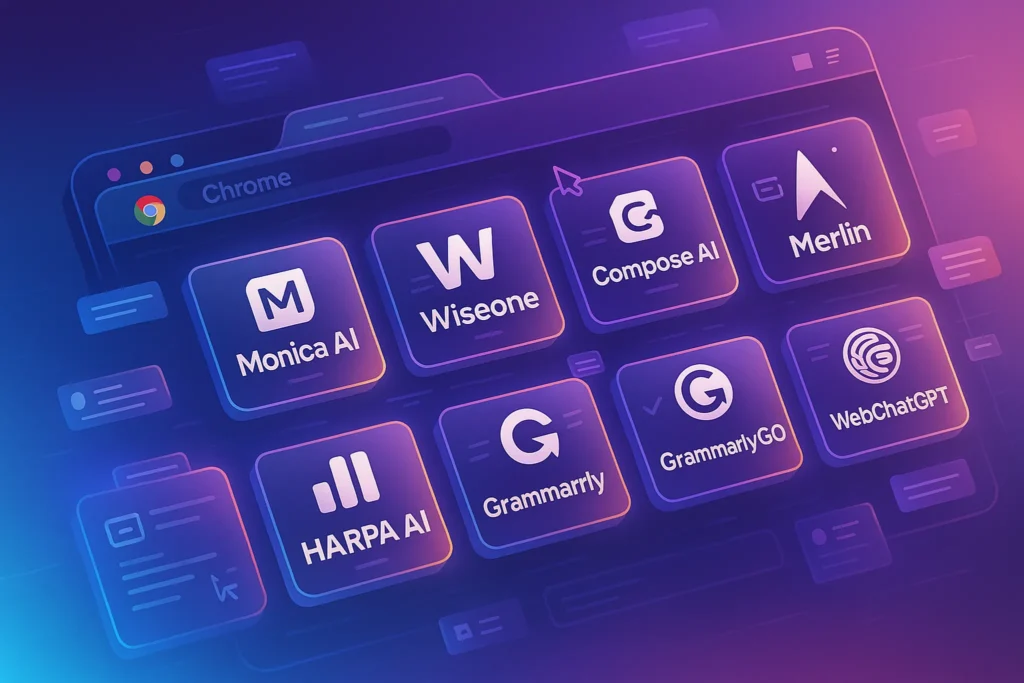📝 Intro:
In 2025, team productivity is no longer defined by meetings or Slack messages—it’s defined by how well your team captures, shares, and hands off knowledge. The right team note-taking app becomes the invisible infrastructure that keeps projects moving forward. Whether it’s real-time brainstorming, structured meeting notes, or seamless knowledge transfer when someone logs off, collaborative note-taking has become as essential as project management itself.
Unlike solo note-taking apps designed for personal knowledge capture, team-focused platforms emphasize real-time sync, multi-user editing, granular permissions, and integrations with tools like Slack, Google Drive, or Notion. Without them, collaboration breaks down into siloed docs and endless “where’s that link?” messages.
💡 Nerd Tip: Treat team note-taking as knowledge infrastructure. It’s not just where ideas live, it’s how momentum is preserved between handoffs.
🚀 Why Team Note-Taking Matters More Than Ever
Remote and hybrid teams demand a different rhythm of collaboration. A developer in Berlin, a designer in New York, and a marketer in Singapore cannot rely on synchronous meetings to align. They need a shared brain that updates itself while they sleep. That’s where collaborative note-taking platforms shine—by turning fragmented conversations into searchable, structured knowledge.
According to industry surveys in 2024, companies using dedicated team note-taking apps saw 28% faster project turnaround times and a 35% reduction in duplicated work compared to those relying solely on email or generic document editors. With AI enhancements in 2025, these tools also now highlight key action items, auto-tag meeting themes, and predict follow-up tasks.
This emphasis on collaboration is why NerdChips has consistently highlighted tools in related areas like Best AI Tools for Remote Team Collaboration and How to Automate Meeting Notes with AI. The lines between note-taking, project management, and team communication are blurring—and the winners are the platforms that blend them seamlessly.
📊 What Makes a Great Team Note-Taking App in 2025?
When evaluating platforms, startups and enterprises alike look for more than just rich text editing. The criteria now include:
-
Real-Time Editing: Multiple team members editing simultaneously without conflicts.
-
Granular Permissions: Control who can view, comment, or edit, essential for sensitive project notes.
-
Knowledge Handoffs: Features that support seamless continuation of work across time zones, including threaded discussions and smart summaries.
-
Integrations: Native connections with Slack, Trello, Asana, or CRM systems.
-
AI Enhancements: Automatic summarization, action item detection, and contextual linking across notes.
💡 Nerd Tip: Don’t pick the “prettiest” app—pick the one that best mirrors your team’s workflow.
🏆 7 Best Team Note-Taking Apps in 2025
1. Notion for Teams
Notion has become the Swiss army knife of collaborative workspaces, and its team features in 2025 are unmatched. Beyond flexible pages and databases, the newest release introduces AI-assisted summaries that automatically create digestible briefs from long meeting notes. Its strength lies in unifying wikis, project docs, and brainstorming notes in one ecosystem.
Startups love it because it scales: from two co-founders sharing quick notes to 200 employees building an entire internal knowledge base. One product manager recently wrote on X:
“Notion AI summarized our 2-hour roadmap meeting into a 400-word doc with next steps. Saved us half a day.”
💡 Nerd Tip: Use Notion’s database links to connect meeting notes with tasks—bridging note-taking with execution.
2. Slite
Slite has always leaned toward lightweight, team-first knowledge sharing. In 2025, its standout feature is Async Decision Tracking, where teams can propose, discuss, and finalize decisions directly inside notes. This is powerful for distributed teams that can’t rely on live meetings.
Its permissions system is highly granular, making it perfect for teams managing client projects alongside internal discussions. Compared to broader tools like Notion, Slite wins when the goal is clarity over complexity.
💡 Nerd Tip: Use Slite’s decision logs as the “source of truth” during retrospectives—it cuts down blame games.
3. Coda
Coda blends documents, spreadsheets, and apps in one, but its collaborative note-taking is underrated. In 2025, Coda’s AI column suggestions and integration with workflow automations turn meeting notes into live dashboards. For example, a note about “budget approval” can auto-trigger an approval request in Slack.
This tight coupling of notes with action makes Coda ideal for cross-functional teams that juggle projects across departments. Its doc-to-app transformation is especially attractive for startups who can’t afford heavy enterprise stacks.
💡 Nerd Tip: Treat Coda notes as prototypes—half doc, half app—to accelerate internal experiments.
4. Microsoft Loop
Loop is Microsoft’s bold answer to Notion. By 2025, Loop has gained strong traction in enterprise teams already invested in Microsoft 365. Its strength lies in real-time fluid components—snippets of notes or tables that can live simultaneously across Teams, Outlook, and Loop pages.
For example, updating a project checklist inside a note automatically syncs it across Outlook tasks. This reduces context-switching dramatically, which is a known productivity killer in large organizations.
💡 Nerd Tip: If your team is already on Microsoft 365, Loop minimizes app overload by blending into tools you already use.
5. Dropbox Paper
Dropbox Paper may not make the flashiest headlines, but it remains a solid, reliable platform for straightforward team collaboration. In 2025, Dropbox has added AI smart highlights and deeper Slack integration, making Paper a practical option for creative teams who want minimal fuss.
Agencies still appreciate Paper for its clean design and ease of onboarding freelancers without heavy training. Its lack of complexity is its biggest feature: focus on notes, not setup.
💡 Nerd Tip: Use Paper for project kick-offs—it’s fast, clean, and non-intimidating for new collaborators.
6. Quip (by Salesforce)
Quip continues to thrive in ecosystems where CRM and sales documentation are the lifeblood. In 2025, its strength lies in embedding notes directly within Salesforce records. This makes it particularly strong for sales and customer success teams who need collaborative notes tied to accounts, opportunities, and handoff processes.
💡 Nerd Tip: For SaaS startups with growing sales teams, Quip provides seamless note-to-CRM handoffs without extra copy-paste overhead.
7. Fellow.app
Fellow has carved out a niche as the meeting notes powerhouse. In 2025, it now uses AI to create agenda suggestions based on recurring themes from past notes. Its tight integration with calendars ensures teams don’t just take notes but also close the loop on accountability.
One engineering lead noted:
“Fellow’s follow-up tracking cut our missed action items by 40%. It’s like a project manager built into our notes.”
💡 Nerd Tip: Use Fellow’s agenda builder to enforce meeting discipline—your future self will thank you.
⚡ Ready to Build Smarter Workflows?
Explore collaboration-first note-taking tools like Notion, Slite, and Fellow. Empower your team with real-time sync, AI summaries, and seamless knowledge handoffs.
⚠️ When Team Note-Taking Fails
Not every team succeeds with collaboration. Many startups still rely on scattered Google Docs, Slack messages, or ad-hoc emails to capture knowledge. The result is chaos: repeated work, lost decisions, and painful onboarding when new members join. One remote-first design team admitted that three weeks of work was wasted because they didn’t realize the same research had already been done by a colleague six months earlier.
This kind of knowledge loss doesn’t just slow teams down—it erodes trust. When people feel their work disappears into a void, motivation drops. That’s why purpose-built team note-taking tools matter: they provide a single source of truth, a searchable history of ideas, and a reliable structure for handoffs.
💡 Nerd Tip: If you find yourself asking “Didn’t we already solve this?”—it’s time to invest in a dedicated team note-taking system.
📐 Quick Comparison Snapshot
To give you a clear sense of where each tool excels, here’s a simple comparison:
| Tool | Best Strength | AI Capability | Integration Focus |
|---|---|---|---|
| Notion | Unified knowledge hub | AI meeting summaries | Databases, project tools |
| Slite | Async clarity | Decision tracking AI | Slack, lightweight teams |
| Coda | Notes-to-app power | AI automation suggestions | Workflow automations |
| Fellow | Meeting discipline | AI agenda builder | Calendar + task follow-up |
This isn’t about picking “the best” overall—it’s about matching the right DNA to your team’s culture.
💡 Nerd Tip: If your team struggles with meeting overload, Fellow is a lifesaver. If you need cross-department knowledge hubs, Notion or Coda are stronger bets.
🌌 What’s Next: Team Knowledge Beyond 2025
Looking ahead, team note-taking will evolve into something even more immersive:
-
AI Knowledge Graphs: Instead of static notes, tools will connect every decision, comment, and document into a living map of knowledge. Teams will be able to “ask” their note system for historical context and get instant answers.
-
Voice-to-Note Systems: Meetings may soon be transcribed and tagged automatically, with action items extracted in real time. This means no one ever has to assign a “note-taker” again.
-
AR and Immersive Collaboration: Imagine teams walking through a 3D workspace of notes and decisions, with sticky notes, diagrams, and highlights floating in virtual space. Early prototypes already exist in research labs.
These trends suggest that note-taking won’t stay in the background—it will become the operating system of team memory.
💡 Nerd Tip: Start organizing your notes now. AI thrives on clean, structured data, and the future of collaboration will depend on it.
📈 Case Study: How a Global Team Cut Missed Actions by 30%
A marketing startup with team members across five time zones adopted Fellow in 2025. Before that, their meetings often ended with vague action items and forgotten follow-ups. Within two months of using Fellow’s AI-driven agenda builder and follow-up tracker, they reported a 30% reduction in missed tasks and much smoother cross-time-zone collaboration.
Another example comes from a SaaS company onboarding dozens of new engineers each quarter. By shifting their documentation and onboarding checklists into Coda, they cut ramp-up time in half. New hires no longer needed to ping senior developers for context; they could find answers directly in living documents.
These stories show that note-taking isn’t just about writing things down—it’s about reducing friction and amplifying execution.
💡 Nerd Tip: Measure the ROI of note-taking by tracking project delays, onboarding time, and missed follow-ups before and after adoption. The impact becomes visible fast.
🔍 Choosing the Right Platform for Your Team
The best choice depends on context. Startups might prefer Notion or Coda for flexibility, while enterprises benefit from Microsoft Loop or Quip. Creative teams lean toward Dropbox Paper for simplicity, while disciplined, meeting-heavy teams thrive on Fellow.
It’s also worth noting how these platforms connect with broader workflows. For instance, pairing team notes with Best E-Ink Tablets for Note-Taking and Productivity makes hybrid collaboration smoother, while integrating with automation stacks like those covered in 10 Best Note-Taking Apps or Best AI Note-Taking Apps for Students ensures knowledge isn’t siloed.
💡 Nerd Tip: Don’t choose based on popularity—choose based on where your knowledge handoffs break down most often.
Want More Smart AI Tips Like This?
Join our free newsletter and get weekly insights on AI tools, no-code apps, and future tech—delivered straight to your inbox. No fluff. Just high-quality content for creators, founders, and future builders.
100% privacy. No noise. Just value-packed content tips from NerdChips.
🧠 Nerd Verdict
In 2025, team note-taking apps are not optional—they’re essential to how modern teams build, align, and scale. Tools like Notion and Coda push boundaries with AI integration, Slite and Fellow sharpen the focus on clarity and accountability, while Loop and Quip anchor themselves in enterprise workflows.
At NerdChips, our view is simple: great collaboration doesn’t live in chat or meetings—it lives in shared notes that evolve as your team does. Choosing the right app is choosing the future health of your knowledge culture.
❓ FAQ: Nerds Ask, We Answer
💬 Would You Bite?
If your team had to pick one feature to prioritize in 2025—AI summaries or real-time multi-user editing—what would you choose, and why?
Crafted by NerdChips for creators and teams who want their best ideas to travel the world.



